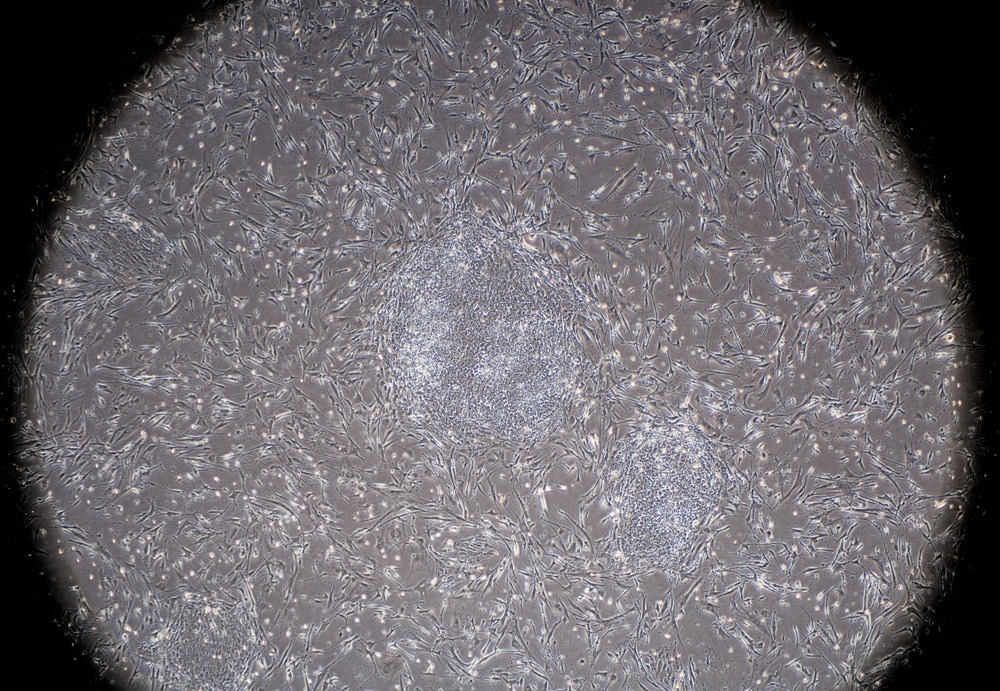Nanowire arrays combined with biological cells can serve as drug delivery systems as well as robust tools for advanced applications like stimulation and sensing. In an article published in the journal Advanced Materials Interfaces, the generation of induced pluripotent stem cell (iPSCs)-derived neurons on different nanowire arrays was demonstrated.

Study: Generation of Human iPSC-Derived Neurons on Nanowire Arrays Featuring Varying Lengths, Pitches, and Diameters. Image Credit: Jan Bruder/Shutterstock.com
Here, three different lengths of nanowires, three array pitches, and two different nanowire diameters were combined for neuronal differentiation. Moreover, interactions between nanowires and cells range from fakir-like to nanowire-encapsulating states based on the array characteristics.
After the terminal differentiation of cells on the nanowire arrays for eight to nine days, the cultures showed neuronal marker-positive cells in equal proportions. Additionally, the developed neurons were similar in terms of action potential kinetics functional, specifying the equivalence of nanowire arrays for neuronal differentiation.
Furthermore, the functionalized nanowire arrays may contribute toward regenerative medicine and stem cell research to develop an understanding of mechanisms such as nanowire-based in vitro gene editing and intracellular delivery of biomolecules to regulate neuronal differentiation.
Technologies Based on Human iPSCs
Nanowire arrays can serve as cell culture substrates and play an important role in establishing novel tools for cell interrogations and stimulation. Although previous reports mentioned the capabilities of nanowire arrays by testing a variety of cell types, such as HEK293, GPE86, and HeLa cells, mesenchymal stem cells (MSCs), and primary rodent neurons, the more sophisticated cells such as those derived from human iPSCs can improve the biomedical applications.
iPSCs are produced through the co-expression of defined pluripotency-associated factors. Genuine iPSCs could develop into an entire embryo in conjunction with extraembryonic membranes. Since the full pluripotency of iPSCs was previously demonstrated by several studies through the most stringent test, it is possible to derive truly pluripotent iPSCs from somatic cells. Because of these features, iPSCs have numerous biomedical applications.
Technologies based on human iPSCs have immensely contributed to the field of preclinical research and applications. These technologies circumvented the ethical and political controversies due to embryonic stem cells (ESCs) and helped generate major cell types, including brain organoids and blood-brain barrier models.
Passive nanowire arrays interact with the cell's nucleus to measure mechanical cell properties, stimulate the mechanotransduction machinery, or reorganize actin. Strong interactions between the substrate and cell membrane help improve the electrical recording and stimulate the nanostructures equipped with microelectrode arrays.
The photoelectrochemical properties of nanowires, either in the form of arrays or in detached form (from the substrate), can be used to regulate neuronal or cardiac activities. Moreover, nanowires can support intracellular delivery via endocytosis or through direct injection into the cell via electroporation in the case of a hollow nanowire.
Generation of Neurons Derived from Human iPSCs
Although previous studies mentioned the possibility of generating neurons from human iPSC on nanowire arrays, the substrates utilized in these studies featured nanowires of only 1 micrometer long, resulting in restricted deformational stress on cells. Hence, the effect of the geometry of the nanowire array on neuronal differentiation remained unclear.
In the present study, the generation of neurons derived from human iPSCs on nanowire arrays was demonstrated after 14 to 15 days of cell differentiation, featuring different combinations of three different lengths of nanowires, three different arrays pitches, and two different diameters of the nanowire.
Varying interactions between nanowire arrays and neurons resulted in substantial variation of the nanowire arrays characteristics. These cell-nanowire array interactions ranged from fakir-like to nanowire encapsulating states, wherein the cell encapsulated the nanowires. While nanowire encapsulation was observed in short nanowires, large array pitches, and thick diameters, the fakir-like states were observed in long nanowires, small array pitches, and thin diameters.
The nanowire arrays with 5 micrometer long nanowires exhibited severe indentations and deformations of neurons, including their nucleus. The varying interaction of cells with nanowire arrays did not affect the neuronal marker-positive cells even after eight to nine days of cell differentiation on nanowire arrays.
Additionally, the electrophysiological properties of the generated neurons determined the quality of the neuronal differentiation on nanowire arrays. The culturing substrates used for neuronal differentiation were equivalent, proving the potential application of functionalized nanowire arrays for neurons derived from human iPSCs.
Conclusion
To conclude, the present study demonstrated the generation of neurons derived from human iPSCs on nanowire assays with multiple geometrical specifications such as different nanowire lengths, array pitches, and different nanowire diameters within 14 to 15 days of cultivation.
The neuronal differentiation showed similarity with planar control in terms of their electrophysiological properties and neuronal markers. Despite the topographical challenges, the equivalence in neuronal differentiation can help nanowire array’s future applications, allowing the tuning of their physical characteristics.
The results demonstrated the possibility of combining nanowire arrays with neurons derived from human iPSCs featuring the compilation of geometrical characteristics to facilitate diverse potential applications. Thus, the nanowire arrays are anticipated to contribute to regenerative medicine and stem cell research, improving cell interrogation and differentiation.
Reference
Harberts, J., Siegmund, M., Hedrich, C., Kim, W., Fontcuberta i, A., Zierold, R., Blick, R. H.(2022) Generation of Human iPSC-Derived Neurons on Nanowire Arrays Featuring Varying Lengths, Pitches, and Diameters. Adv. Mater. Interfaces.https://onlinelibrary.wiley.com/doi/10.1002/admi.202200806
Disclaimer: The views expressed here are those of the author expressed in their private capacity and do not necessarily represent the views of AZoM.com Limited T/A AZoNetwork the owner and operator of this website. This disclaimer forms part of the Terms and conditions of use of this website.